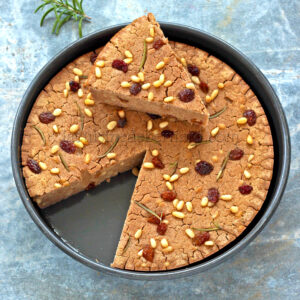
Castagnaccio
Ingredients
- 350 g farine de châtaigne
- 400 g eau ou plus
- 80 g pignons de pin
- 60 g raisins secs
- 1 branche romarin
- 1 c. à soupe huile d'olive
Instructions
- Commencez par mettre les raisins secs dans un bol d’eau chaude une heure avant de réaliser la recette. Versez la farine de châtaigne dans un récipient puis versez l’eau petit à petit tout en mélangeant. La quantité d’eau va dépendre de votre farine.
- Il faut que la pâte coule en ruban épais.
- Ajoutez 65g de pignons et réservez le reste pour le dessus du gâteau. Versez également une bonne partie des raisins secs égouttés, gardez-en quelqu’uns pour le dessus.
- Coupez un papier sulfurisé à la taille du moule, puis versez l’huile d’olive. Répartissez-la bien avec un papier absorbant sur le fond et le bord interne. Versez la totalité de pâte.
- Parsemez du reste des pignons et des raisins secs égouttés. Placez quelques feuilles de romarin.
- Faites cuire 30 minutes à 175°C sur chaleur statique (appelée aussi chaleur traditionnelle, mais pas chaleur tournante).
- Laissez totalement refroidir avant de couper en petites parts.
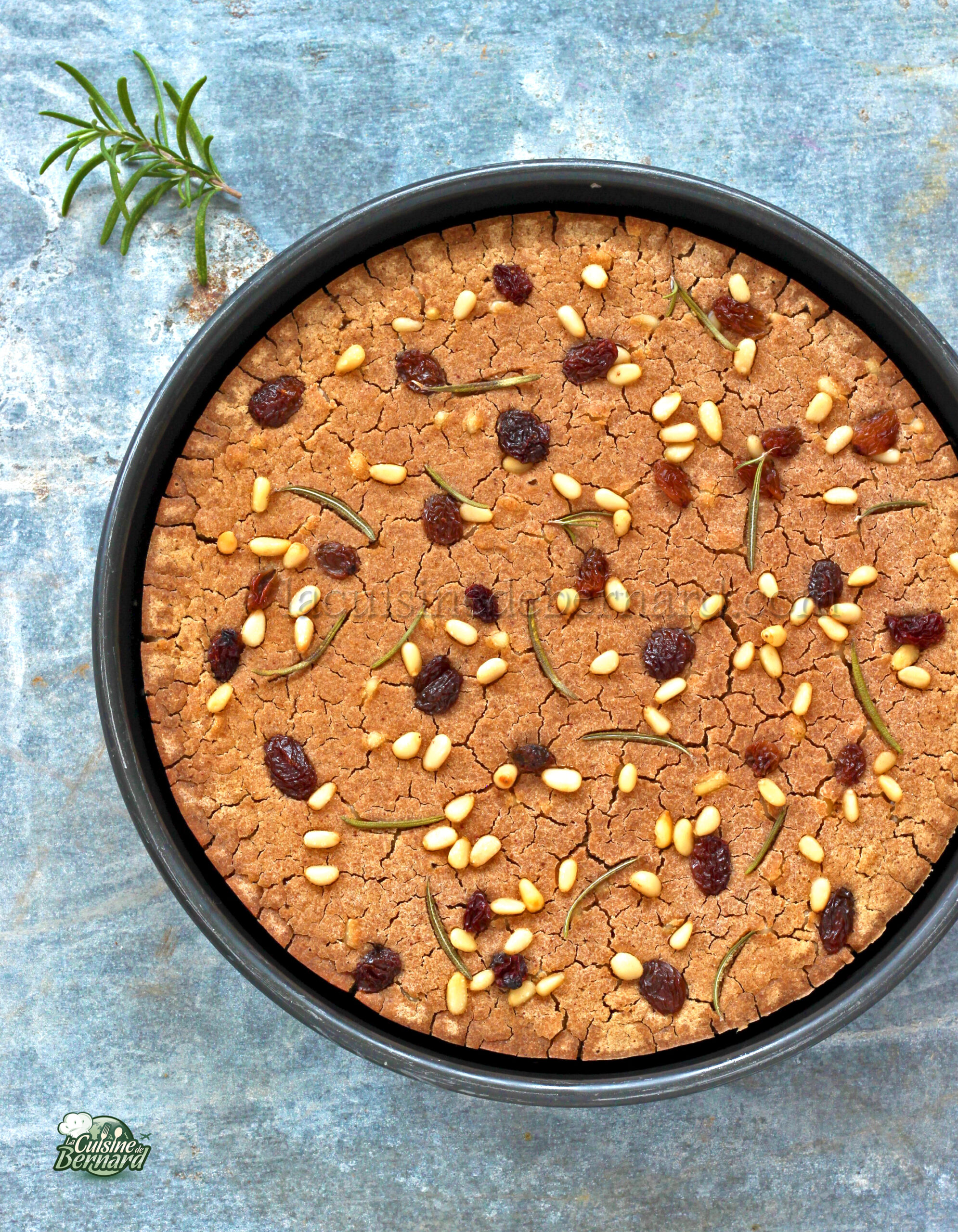
This recipe, found in chestnut-growing regions of Italy and Corsica, is a very simple cake to make. Originally a poor dish, it contains no eggs, butter, wheat flour, sugar or honey. Just chestnut flour, water and a few pine nuts, raisins and a dash of olive oil. Its very special texture will probably not suit everyone. It is quite dense, but its very pronounced chestnut taste is a delight. Thanks to its ingredients, this cake is naturally gluten-free and vegan (as it contains no eggs or lactose).
Recipe for a 23-24 cm mould:
- 350g chestnut flour
- 400 to 500ml (or grams is the same) of water
- 80g of pine nuts
- 60g of raisins
- a sprig of rosemary
- one tablespoon olive oil
Start by placing the raisins in a bowl of hot water one hour before you want to make the recipe. Pour the chestnut flour into a bowl, then add the water a little at a time, stirring constantly.

The amount of water will depend on your flour.

The dough should flow in a thick ribbon.
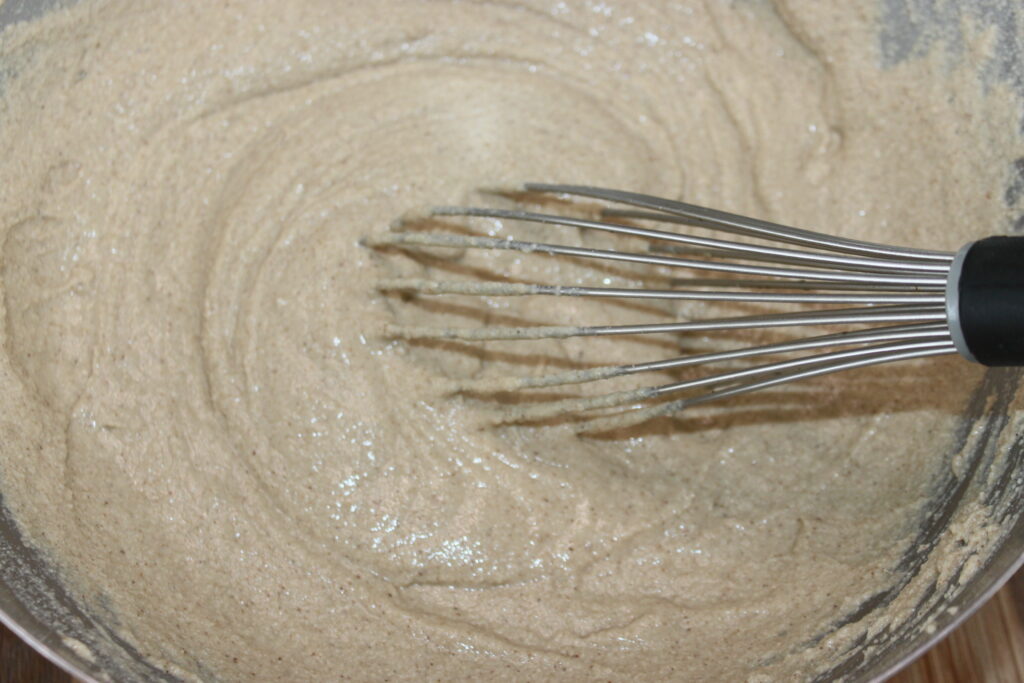
Add 65g of pine nuts and reserve the rest for the top of the cake. Pour in a good portion of the drained raisins too, saving a few for the top.
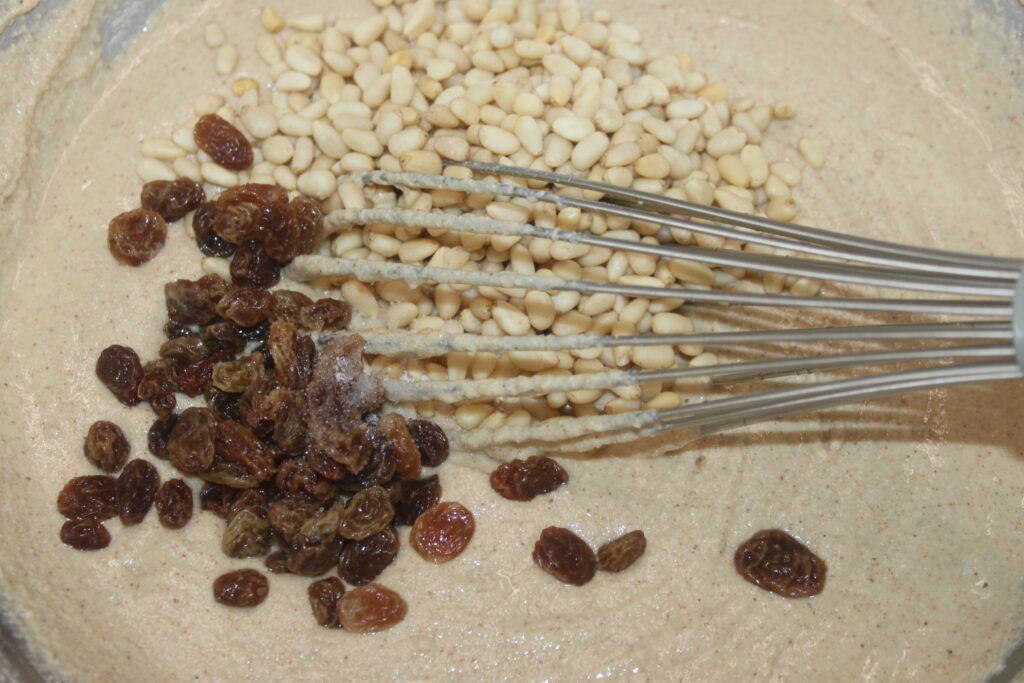
Cut a piece of parchment paper to the size of the mold, then pour in the olive oil. Spread it evenly over the bottom and inner edge with kitchen paper.
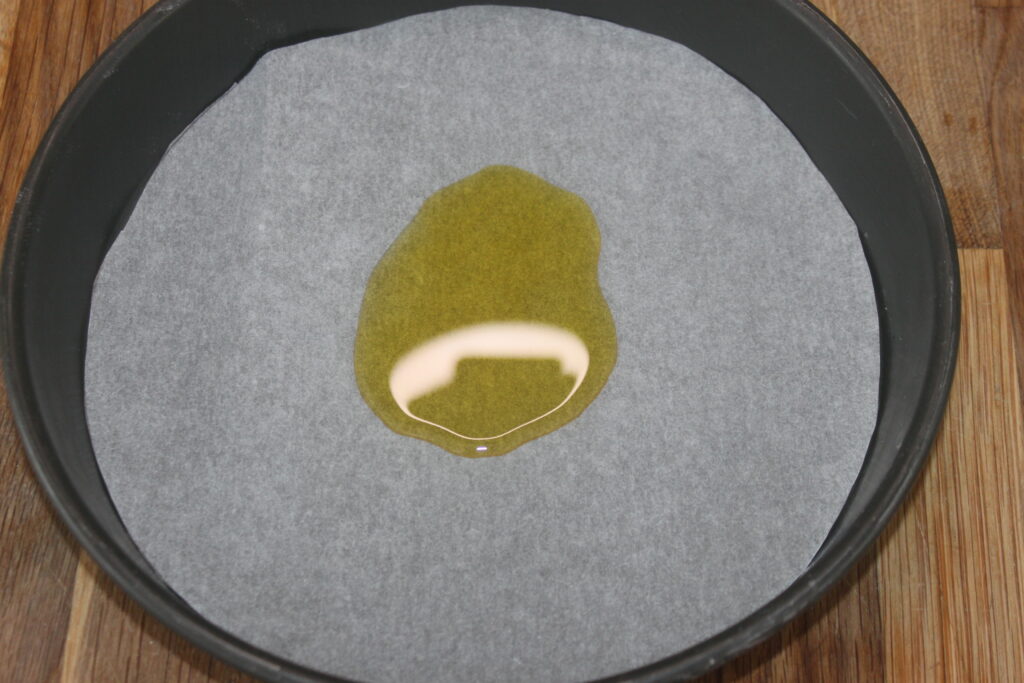
Pour in all the dough.
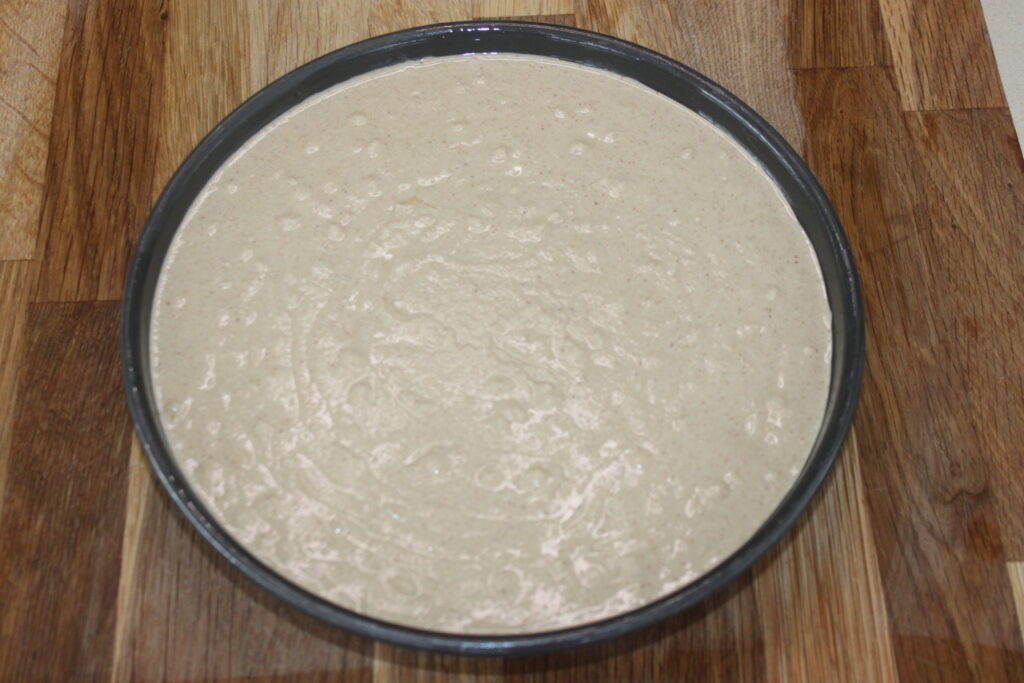
Sprinkle with remaining pine nuts and drained raisins. Garnish with a few rosemary leaves.
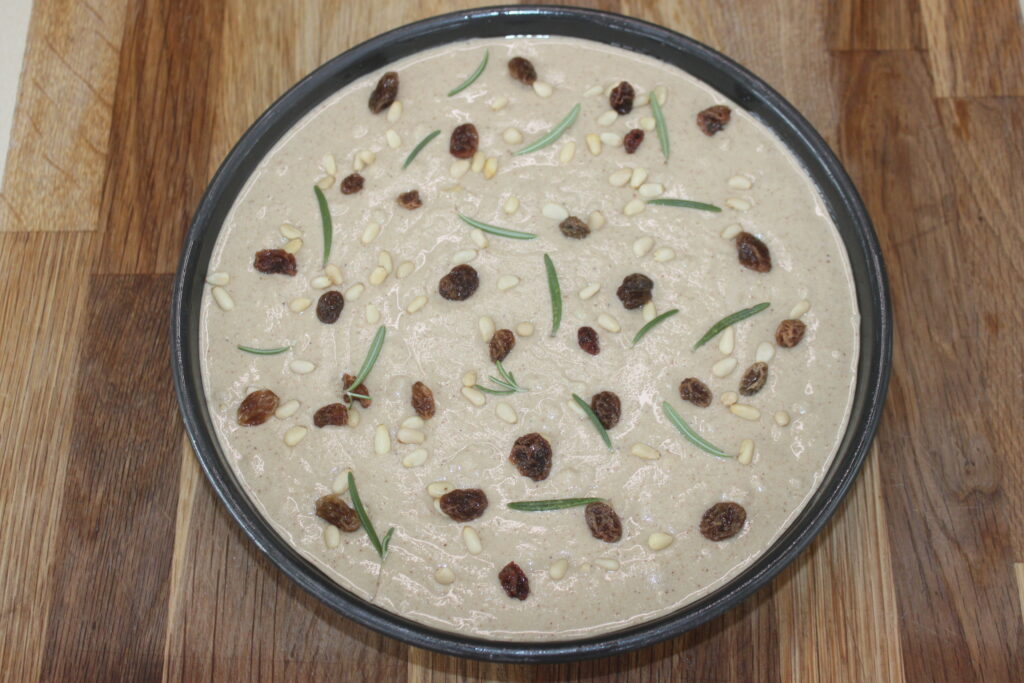
Bake for 30 minutes at 175°C over static heat (also called traditional heat, but not revolving heat).
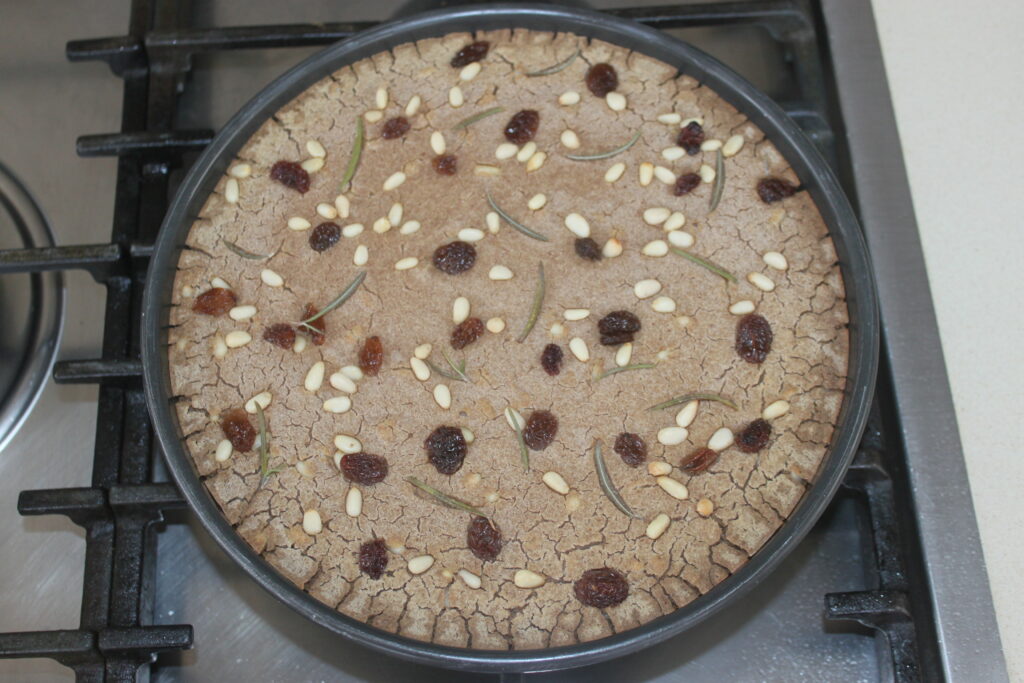
Leave to cool completely before cutting into small slices;
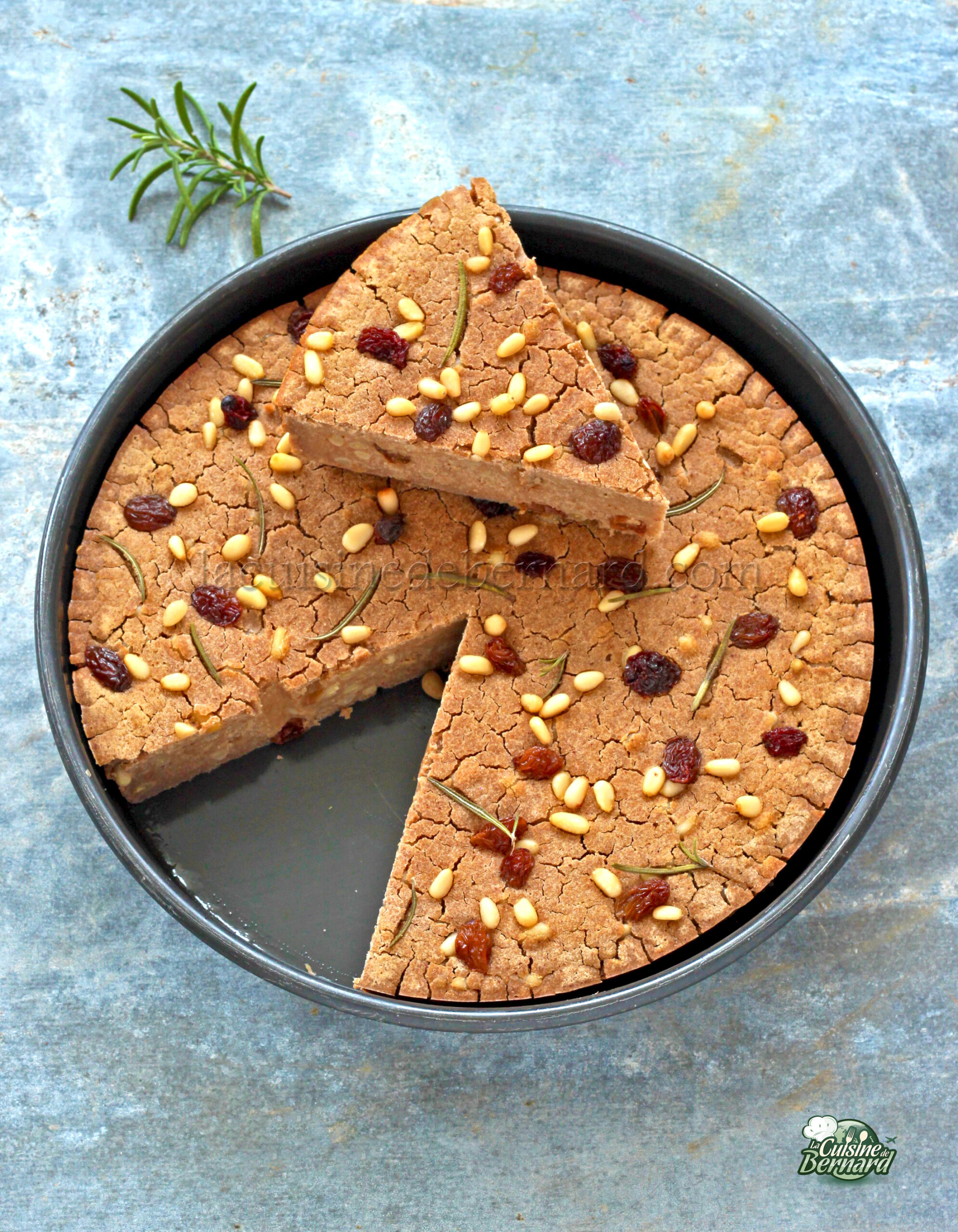

Castagnaccio
Ingredients
Instructions
- Start by placing the raisins in a bowl of hot water one hour before you want to make the recipe. Pour the chestnut flour into a bowl, then add the water a little at a time, stirring constantly. The amount of water will depend on your flour.
- The dough should flow in a thick ribbon.
- Add 65g of pine nuts and reserve the rest for the top of the cake. Pour in a good portion of the drained raisins too, saving a few for the top.
- Cut a piece of parchment paper to the size of the mold, then pour in the olive oil. Spread it evenly with paper towels over the bottom and inner edge. Pour in all the dough.
- Sprinkle with remaining pine nuts and drained raisins. Garnish with a few rosemary leaves.
- Bake for 30 minutes at 175°C over static heat (also called traditional heat, but not revolving heat).
- Leave to cool completely before cutting into small slices.
